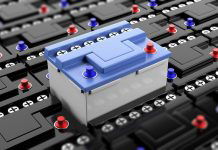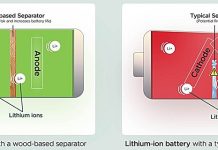
The frustration of dealing with devices that rapidly run out of battery or take forever to charge is a common experience in today’s digital age.
Whether it’s phones dying at critical moments, laptops closing down when needed most, or hesitations about electric cars due to range anxiety and cost, the root of these issues often lies in the limitations of lithium-ion batteries that power much of our technology.
However, a breakthrough from researchers at the Florida State University-headquartered National High Magnetic Field Laboratory, published in Science Advances, promises a significant leap forward.
The team is making strides in developing a new type of battery that could overcome the shortcomings of current lithium-ion batteries.
This new generation of batteries, known as solid-state batteries, is poised to revolutionize how we power our devices. Unlike the liquid-electrolyte-based batteries that have been the standard for the past three decades, solid-state batteries utilize a solid electrolyte.
This change brings several advantages, including increased safety, as solid-state batteries are less likely to catch fire when damaged or overheated.
They also boast higher energy densities, meaning they can store more power in the same amount of space, and offer longer battery lives, reducing the frequency with which they need to be replaced.
Erica Truong, a doctoral student at FSU and a member of the research team led by chemistry and biochemistry professor Yan-Yan Hu, highlights the potential for solid-state batteries to last significantly longer than current batteries, marking a substantial improvement in user experience.
One of the primary challenges in the adoption of solid-state batteries has been their high production costs and manufacturing complexities. However, the FSU research team is dedicated to developing solid-state battery systems that not only enhance performance but are also commercially feasible.
Their recent study focuses on a novel solid electrolyte design made of lithium chloride and gallium fluoride. Through their research, they discovered a mechanism that significantly promotes ion transport within solid electrolytes, a critical factor in battery efficiency.
Utilizing the MagLab’s advanced solid-state Nuclear Magnetic Resonance systems, the team delved into the structural properties of the gel-like electrolyte.
They identified a process called charge clustering, where chlorine and fluorine work together to loosen the bonds holding lithium ions.
This process facilitates faster movement of lithium ions, enabling quicker charging times and extending battery life. The material’s clay-like consistency adds a unique aspect to its functionality.
The development of solid-state batteries with such enhanced characteristics offers a promising solution to the pervasive issue of battery reliability in modern technology.
As research continues to progress, the prospect of devices that charge more quickly and last longer becomes increasingly tangible, potentially reshaping our relationship with technology and paving the way for more sustainable and efficient energy use.
The research findings can be found in Science Advances.
Copyright © 2024 Knowridge Science Report. All rights reserved.



